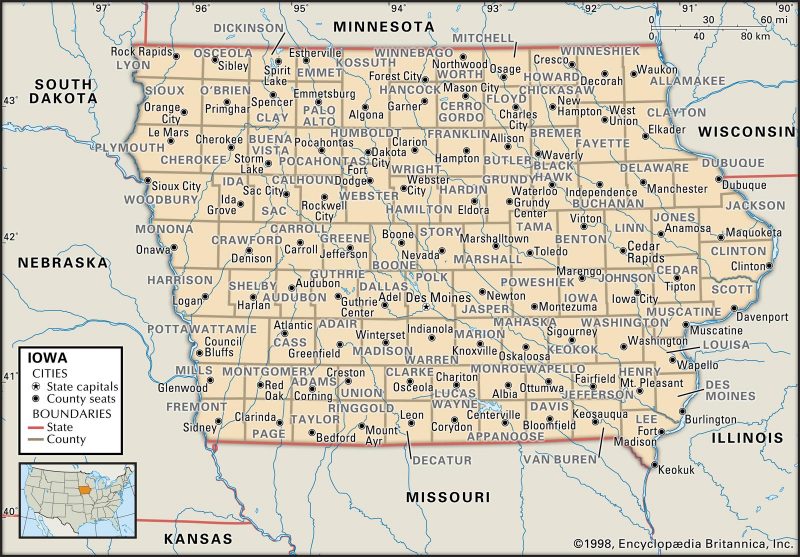
Only four of Iowa’s 99 counties have achieved gender balance on all appointed boards and commissions in 2018, reports the Carrie Chapman Catt Center for Women and Politics. This is down from the 2016 Gender Balance Project study that found six counties had achieved gender balance. In total, 58.92 percent of Iowa’s county boards are gender balanced, an increase of only .28 percent from 2016.
The Gender Balance Project has been conducted by the Catt Center every two years since 2012 as a way to track the progress of the 2009 Iowa law that requires gender balance on appointed county and municipal boards and commissions. Iowa has required gender balance on state boards and commissions since 1987. The 2009 law extending this requirement to county and city boards went into effect on Jan. 1, 2012.
Harrison, Jasper, Scott and Winneshiek counties achieved gender balance on all seven of the boards and commissions studied. Scott County has reported gender balanced boards in all three of the Catt Center’s data collections, which began in 2012 with the first report published in 2014. This is the second time Harrison County has earned this designation. Another 15 counties have reached gender balance on all but one of their boards.
Women make up 34 percent of board members and 24 percent of board chairs, a 1 percent increase from 2016 in both categories. The percent of women serving as vice chairs dipped by 6 percent from 2016 with women making up only 34 percent of vice chairs in 2018.
Kelly Winfrey, coordinator of research and outreach at the Catt Center noted: “Women are better represented on boards of health, 78 percent of which are gender balanced. Women’s representation is much lower on compensation boards with only 40 percent gender balanced.”
In addition to boards of health, the majority of boards of adjustment, boards of review, conservation boards, and veteran affairs boards are gender balanced. However, the majority of compensation and planning and development boards are unbalanced.
The first snapshot of county gender balance was published on the Catt Center’s website in 2014 from data collected in 2012 and 2013. At that time, 49.53 percent of boards and commissions were balanced, and women made up 29 percent of board members. Data reported in 2016 showed significant improvement with 58.64 percent of boards gender balanced, with 33 percent of the members being women.
The 2018 data shows some improvements, but by much smaller increments.
“The gender balance law went into effect in 2012, so there was likely a push to increase women’s representation on these boards soon after,” Winfrey said. “As time has passed, the numbers have started to plateau. And, while the state requires gender balance, there is no enforcement mechanism to ensure counties are making every effort to balance their boards. We need a renewed focus on achieving gender balance.”
Since the 2009 law extending gender balance to county and municipal boards went into effect in January 2012, the Catt Center has collected data every two years as part of its Gender Balance Project to better understand the effectiveness of this legislation. Data is requested from all 99 counties on the gender make-up of seven boards and commissions (planning and development, adjustment, compensation, review, conservation, health and veteran affairs).
Seven counties did not respond to requests for information (Hardin, Jefferson, Johnson, Mills, Page, Sac and Warren). Information from the missing counties was obtained from their official websites when available.
As part of its Gender Balance Project, the Catt Center also requests data from 207 selected Iowa cities – all county seats and the largest cities in the state. Winfrey is now analyzing city-level data, which will be posted on the center’s website and reported in the September issue of Voices.
Learn more about the Gender Balance Project and review reports by visiting the Catt Center’s website.